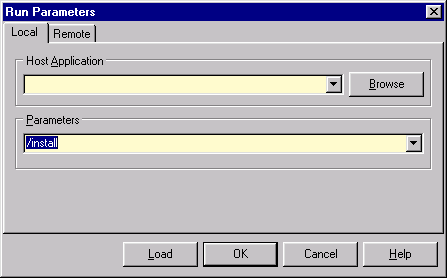 |
| Simple NT Service |
| Step 5. Installing, uninstalling and running the SvCom application |
|
Important note: The source code of this example is included into SvCom package. The latest version of this example is available here: Simple NT Service Example. The services are not ordinary applications. For the normal work the service should be registered in the system. The SvCom application does all necessary registration calls if started with the /install switch. Try to install our example. To do this go to the Run|Parameters dialog and type the '/install' in the Parameters field.
Press OK and run application. You will see that it works a couple of seconds and stops automatically without any notifications. Important note: SvCom application does not show notification window on successful installation or uninstallation unlike the TService applications do it. So you will have no problems when you distribute your SvCom applications and install it with a setup program. OK, our service is installed now. To be sure of it go to the Control Panel and select the Services applet. You will see the name of our service 'SvCom Example N 1' in the list of services. Select it and press the Start button. The service will start and you will hear beeps. Now press a Stop button to stop it. Service stops and does not beep now. The service application can be started not only
from the control panel but from the Command Prompt too. Let's try it. Go to the
command prompt and type the command Well, after playing enough with this first example we should uninstall it. The thing is that this service was installed to AutoStart mode by default and it will start automatically each time after rebooting. And you will hear a beep, beep, beep, beep... Let's uninstall it now. To do it run our
application with /uninstall switch. You can do it from the Delphi IDE as it
were shown above or from the command prompt. Just type the command In future you will need to use one more SvCom switch I mean the /reinstall switch. When SvCom application detects this switch it uninstalls itself and installs again immediately. No exceptions occur if the service was not installed before. We have examined the process of creating, installing and running the service application based on SvCom components. But there is one more operation that is necessary during application development. It is debugging. Special efforts were applied to do a debugging of SvCom applications more easy. Next step shows how to debug SvCom application. |
| << | Index | Step 1 | Step 2 | Step 3 | Step 4 | Step 5 | Step 6 | >> |
| © 1998-2014
Alexey Dynnikov |

